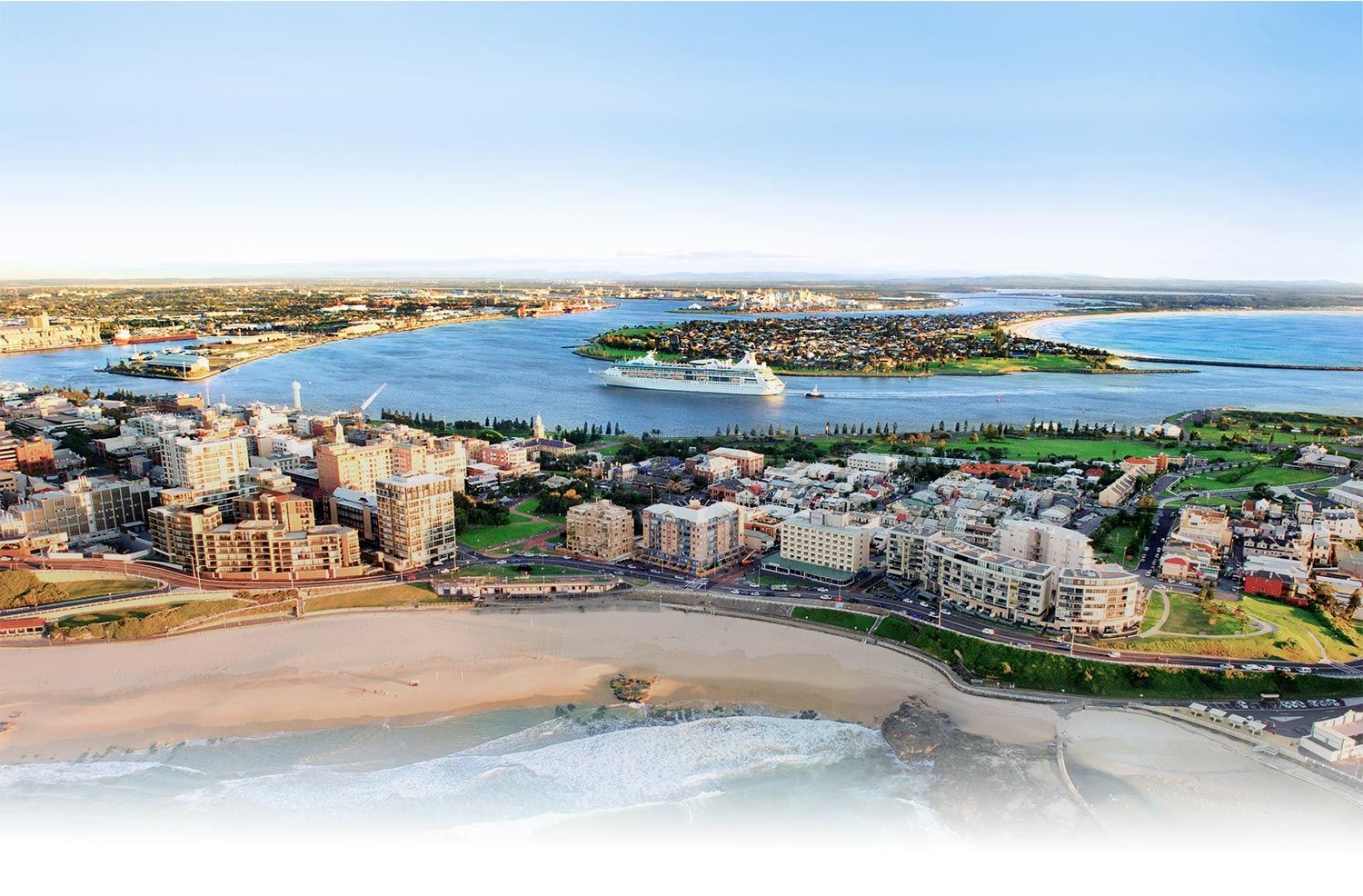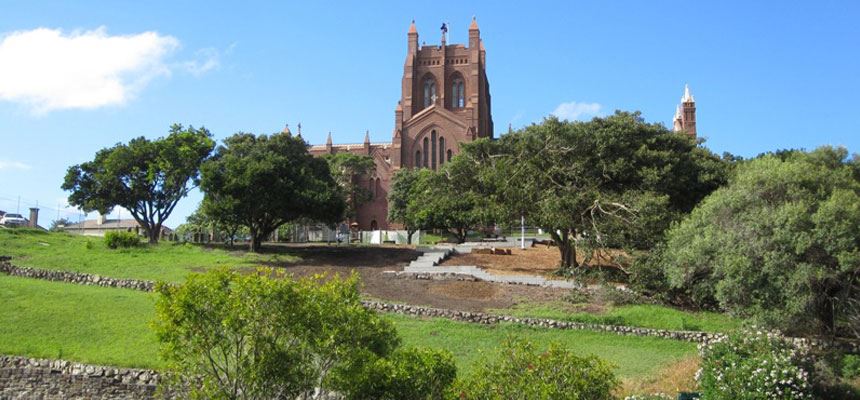
Cathedral Park

Did you know Cathedral Park holds the remains of more than 3,300 early residents of our city? Proclaimed a place of burial by Governor Macquarie in 1816, Cathedral Park was the first place of burial for the penal settlement at Newcastle. It was closed to further burials in 1884, providing a unique historical snapshot of the people who lived during that time. Around 40% of interments were infants, reflecting the harsh health and living conditions of the 19th century.
Once overlooked as a space between the cathedral and car park, Cathedral Park is being reimagined as a place of cultural reflection, where the city’s colonial and social history can be respectfully shared and remembered.
The burial ground was closed in 1884 following public concern about its condition. For decades it fell into decline. In the 1950s, City of Newcastle began advocating to establish a park on the site, and by the 1960s, the trustees of Christ Church Cathedral agreed. A special Act of Parliament—the Christ Church Cemetery Act 1966—was passed, permitting CN to acquire the land for use as a public park.
A comprehensive survey of the cemetery was undertaken, including a photographic record, plan of burials, and headstone inscriptions. City of Newcastle then implemented a design that relocated 84 headstones to the eastern side of the park, with damaged or irreparable monuments repurposed in landscaping projects across Newcastle.
To help visitors understand the original layout and those laid to rest here, the following digitised resources are available:
- 1966 Burial Plan (PDF) overlaid onto the modern survey of the park
- List of Graves (PDF) sorted alphabetically by surname
- Grave inscriptions (PDF) sorted by the number that appears on the 1966 Burial Plan. Use this list to find the burial you are looking for and then cross check it to the Burial Plan to find the location of the burial in the park.
Since 2012, City of Newcastle has delivered a series of improvements to Cathedral Park, guided by a Conservation Management and Interpretation Plan (PDF) and a Master Plan (PDF) developed in consultation with the NSW Heritage Branch, stakeholders, and descendants. These plans were created to honour the site's historical and cultural significance, while also opening it up as a place of reflection and public enjoyment in the heart of the city.
The long-term vision is to create an ‘open air museum’—a peaceful, accessible space where heritage is celebrated through thoughtful landscaping, interpretation, and memorial elements.
To date, key works have included:
- Stabilisation of headstones to enable their return to recorded burial positions
- Landscaping and pathway upgrades to improve access and amenity
- Opening up views to the working harbour and Stockton Bight
- Integration of interpretive signage to share the stories of those buried on site
These works have been delivered in stages with funding support from the state and federal governments, as well as City of Newcastle’s asset renewal program.
Looking ahead - Future Stage 3 works
A third and final stage is planned to further enhance the park’s heritage and community value, subject to future grant funding. Proposed works include:
- A memorial to commemorate the many infants buried in Cathedral Park
- A monument recognising the 60 lives lost in the 1866 Cawarra shipwreck, 31 of whom are buried on site
- A landscaped terrace acknowledging the historic ‘Mulimbah’ residence and stories of early Novocastrian life
- Return of the remaining stabilised headstones to their recorded burial positions
- Additional interpretive signage, pathways, park seating and viewing platforms
- A new park entry point from King Street
While the timing for Stage 3 is yet to be confirmed, we remain committed to delivering the final stage of works when future funding becomes available.











